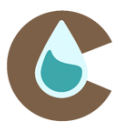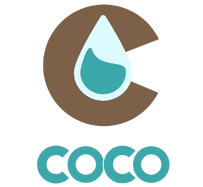
Community Mitigation Assistance Team
About CMAT
The Community Mitigation Assistance Team (CMAT) assesses the local conditions, reviews the barriers, and dives in feet first. We review what works and what does not. The team helps the local community make the necessary connections it needs to succeed and leaves it with the tools it needs to move forward. Like Coalitions and Collaboratives, Inc. (COCO), CMAT does not do the work for a community; instead, we facilitate positive actions.

- CMAT works closely with Incident Management Teams, the Forest Service or other land management agencies and community residents and leaders to identify mitigation opportunities before a fire impacts the community.
- CMAT works with local partners to identify and help them resolve mitigation challenges and build long-term mitigation efforts using best practices.
- The team uses SWOT (strengths, weaknesses, opportunities, and threats) analysis, one-on-one interviews, mentoring, best community risk reduction practices, mini-workshops, Community Wildfire Protection Plans (CWPPs), risk and fire occurrence maps, home assessments, pertinent research, demographics, their experience, and close community collaboration to help communities move mitigation forward.
- Every assignment is different and dictated by individual community needs.
- The community is at medium to high risk of wildfire and has an identified mitigation challenge.
- There is an existing wildfire mitigation organization/coalition including local, state, and federal land management partners.
- Pertinent local, state, and federal partners have the capacity and desire to work closely with the team during the assignment and to implement resulting recommendations including follow-up reporting of accomplishments.
- The scope of the project should provide a good return on investment (long and short-term) to justify the cost of deploying a team.
- The ordering authority must provide a working location, internet access, and support for the CMAT during deployment.
Any community that meets the conditions described above may request a CMAT through the local National Forest, Incident Command Team, or other federal land manager. Requests are vetted by the National CMAT Lead based on enabling conditions, need and likelihood of success.
To order a CMAT, please coordinate with your partners to complete this request form. Upon completion, please submit to the National CMAT Lead, Jonathan Bruno and Forest Service CMAT Coordinator, Sheryl Page.
Boise County, Idaho (2024): Lowman Community Wildfire Wildfire Mitigation Action Plan
New Bern, North Carolina (2023): One More Day, Croatan National Forest
Mount Hood, Oregon (2022): A Corridor to Collaboration
Evergreen, Colorado (2022): Mitigating Wildfire – Evergreen Needs Everyone
Sevier County, Tennessee (2022): Actions Speak Louder Than Words
Grand County, Colorado (2021): Grand County Turns Troublesome into Triumph
Lake County, California (2021): Lake County – Aligning to Action, Healing the Land, Healing the People
Greater Santa Fe, New Mexico (2021): Greater Santa Fe Fireshed Coalition: A Path Forward
Teller County, Colorado (2020): Teller County Wildfire Council
Alpine, Wyoming (2019): CMAT Report Alpine Area
Dollar Ridge Fire (2018): Crossing Boundaries for Collaboration
Spring Creek Fire (2018): Mitigating Mountains
Montana Wildfires (2018): Missoula County
Pisgah National Forest (2017): New Insights, New Partners
Chetco Bar (2017): Ideas to Action
Bridger Teton National Forest (2016): Moving Mitigation Forward: Opportunities for TAWPC
Pike San Isabel National Forest (2016): A Blueprint for Mitigation
The Chelan Complex – Leavenworth (2015): Executive Summary
- Team members are highly proficient wildland urban interface mitigation specialists with extensive experience in community mitigation best practices and skills in analytical thinking, problem solving, wildfire behavior, collaboration, communication, and teamwork. Must be familiar with incident command.
- Assignments are usually 7-14 days/12-14 hour days; laptops, cell phones, and personal credit cards are required (expenses are reimbursed).
- Team members are ordered through ROSS following interagency incident business management practices and are paid based on ROSS status (agency employee, AD, or cooperator/partnership agreement) and reimbursed for travel and per diem per policy.
- Team members report to the team lead who functions as the liaison with the local Forest and community.
- If you are interested in becoming a team member fill out the application and e-mail to the Forest Service CMAT Coordinator.

Your CMAT Contacts

Jonathan has a Masters in Public Administration from the University of Colorado and graduated from the Executive Leadership program at Yale University’s School of Forestry and Environmental Studies. Before helping to found and lead Coalitions and Collaboratives over the past decade, Jon served on the Coalition for the Upper South Platte leadership team. Jon also helped to found and is the team leader for the Community Mitigation Assistance Team (CMAT) on National Wildland Fire Assignments. He works closely with communities on forest health initiatives aimed at creating resilient forests and safer communities and works to restore lands impacted by recent wildfires and natural disasters. With over 20 years within emergency services, as a safety officer for a search and rescue team, and as a wildland firefighter, he continues to work at the intersection of emergency response and community preparedness.

Hannah Thompson-Welch completed her Associate of Applied Science in Forest (Management) Technology degree at Hazard Community College (KY 2000). She earned a Bachelor of Applied Science from BYU-Idaho (ID 2020). She started her career working assisting with forest research at the University of Kentucky’s Robinson Forest, working with kids at Kentucky Dept. of Fish and Wildlife’s Camp Earl Wallace and dispatching for the the Kentucky Division of Forestry’s Kentucky River District during the Fall Fire Season of 2001. She was hired as County Ranger in both Crittenden & Livingston Counties (KY 2002-03). She worked as a Ranger in Surry, Forsyth, and Wayne Counties (NC 2003-13).
She attended the Community Mitigation Academy in Richfield (UT 2018) and Community Mitigation Assistance Team training in Boise (ID 2019). She is a Community Wildfire Mitigation Best Practices Instructor and serves as a member of the National CMAT. Hannah is co-coordinator of the newly formed Croatan Area Fireshed Partnership. Since 2016, Hannah has served as the Wildfire Mitigation Specialist for the North Carolina Forest Service, covering 50 counties in eastern NC. During her 23 years of experience in forestry/wildfire, Hannah served over a decade as an initial attack wildland firefighter/forestry technician in multiple counties and as the statewide Outreach Coordinator.
